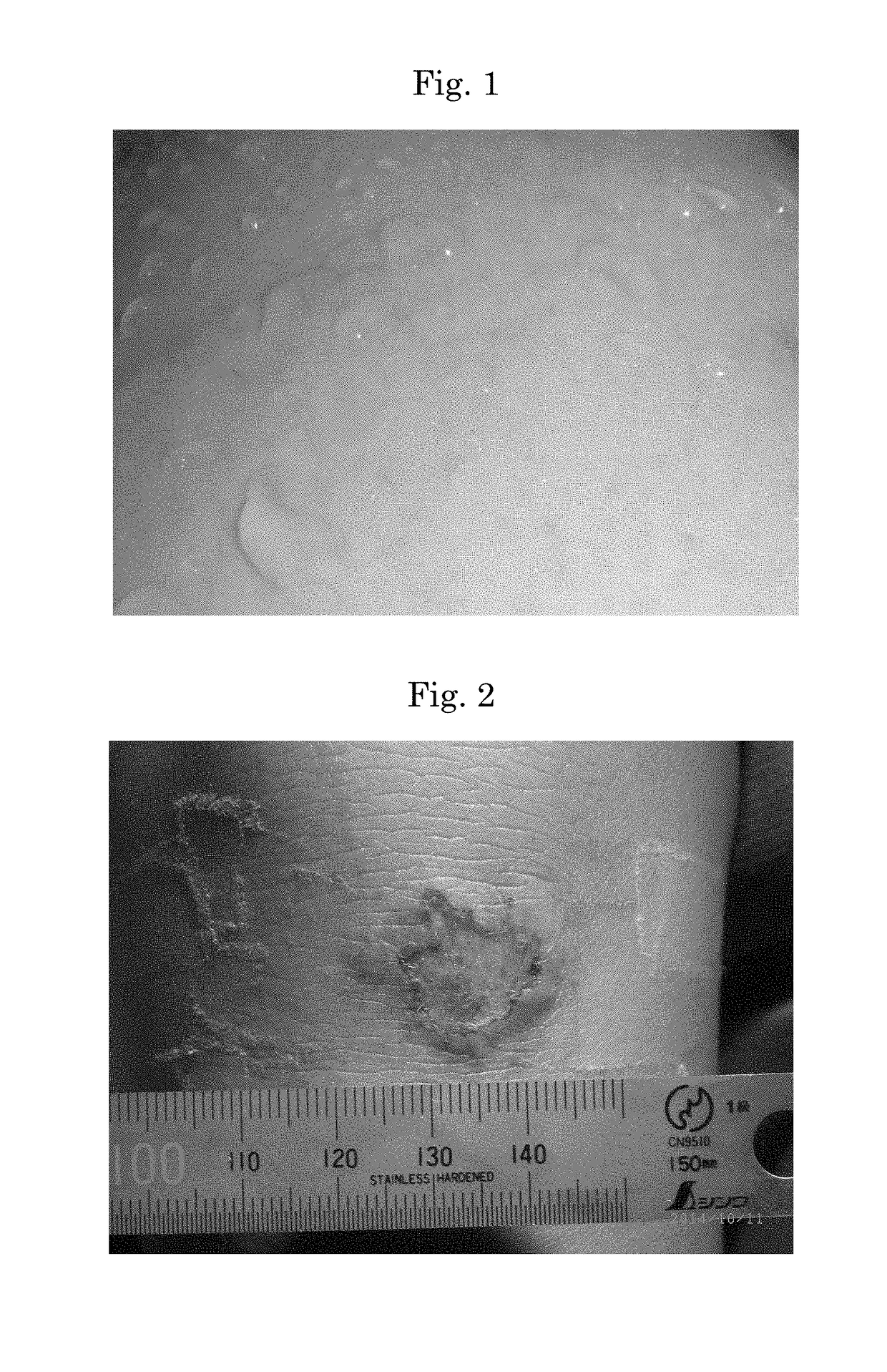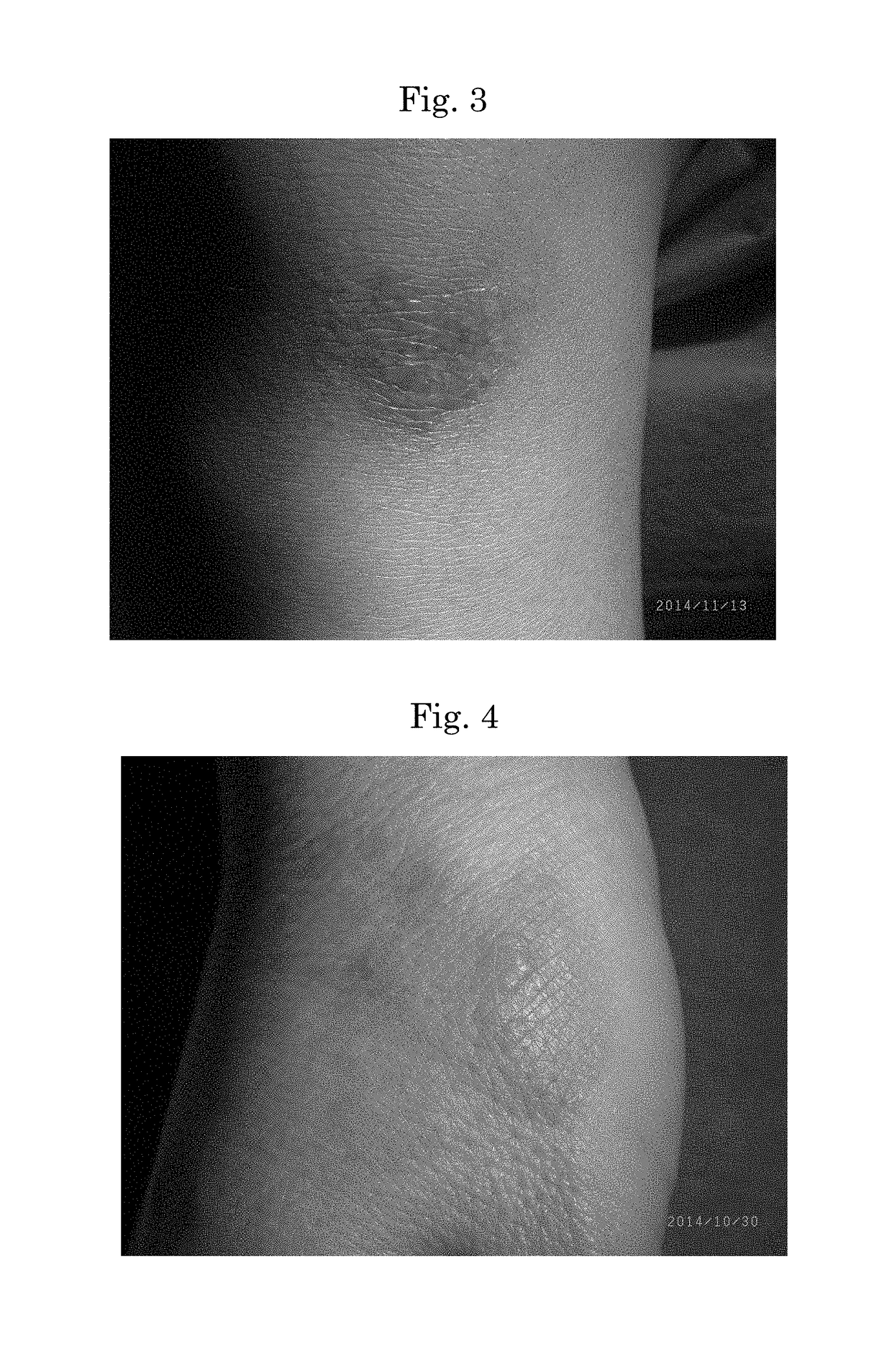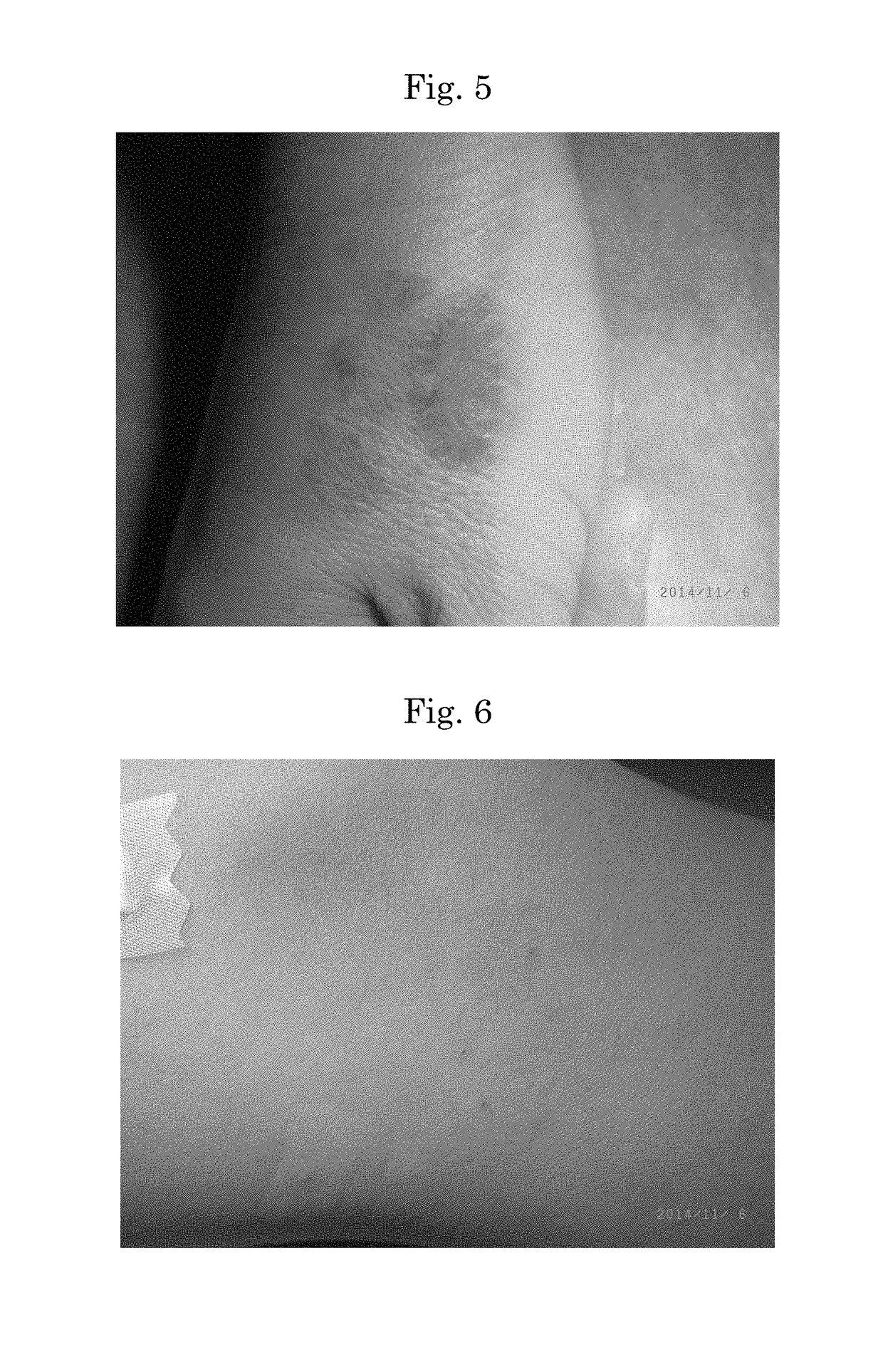Method for coating skin abrasion, laceration, burn or oedema after surgery
a skin abrasion, laceration, burn or oedema technology, applied in the direction of bandages, dermatological disorders, drug compositions, etc., can solve the problems of inability to apply conventional dressings, high amount of inflammatory exudate, and high pain associated with surgery, so as to suppress inflammation reactions, reduce fat, and suppress fibrin production
- Summary
- Abstract
- Description
- Claims
- Application Information
AI Technical Summary
Benefits of technology
Problems solved by technology
Method used
Image
Examples
example 1
[0065]To 500 ml of purified water, base components 1 and 2 were dissolved followed by the addition of 3, 4, 5 and 6 and the mixture was stirred.
[0066]
1. Aluminium chloride hexahydrate45.50 g 2. β-Cyclodextrin6.50 g3. Xanthan gum1.50 g4. Glycerol20.0 g5. Propylene glycol20.0 g6. 10% sodium hydroxide solution15.0 g7. 70% ethanol preparation 9.0 g
[0067]In the present Example, in order to reduce irritating nature at affected areas due to the acidity of aluminium chloride, 3.0% of the 10% sodium hydroxide solution was added to neutralise, the produced precipitate was removed by filtration and pH was adjusted to 3.9. The resulting solution did not have any action as a bactericidal agent and had fungus growth after a 1-week storage at a normal temperature to form colonies like spherical moss. Therefore, the 70% ethanol preparation was added as a fungicide.
[0068]
[0069]Use example to knee abrasion: An abrasion with the maximum size of 15 mm×15 mm in a 10-year-old boy. The boy had repeatedly ...
example 2
[0079]To 500 ml of saline, base components 1 and 2 were dissolved followed by the addition of 3, 4, 5 and 6 and the mixture was stirred.
[0080]
1. Aluminium chloride hexahydrate60.0 g2. β-Cyclodextrin 5.0 g3. Glycerol20.0 g4. Propylene glycol20.0 g5. 70% ethanol preparation 9.0 g
[0081]In the present Example, in order to reduce irritating nature at affected areas due to a low acidity of aluminium chloride of pH 1.9, components 3 and 4 were added as buffering agents. The aqueous solution containing base components had low bacteriostatic or bactericidal action and had fungus growth after a 1-week storage at a normal temperature to form colonies like spherical moss. Therefore, the 70% ethanol preparation of component 5 was added as a fungicide.
[0082]
[0083]An example of abrasion on left forearm. The patient hit on left forearm against a rock during mountain climbing to suffer abrasion. The depth of wound was up to mid-upper dermis. Immediately after the climbing, Example 2 was applied. At ...
example 3
[0084]To 500 ml of purified water, base components 1 and 2 were dissolved followed by the addition of 3, 4, 5 and 6 and the mixture was stirred.
[0085]
1. Aluminium chloride hexahydrate60.0 g2. Hydroxypropyl-β-cyclodextrin 5.0 g3. Glycerol20.0 g4. Propylene glycol20.0 g5. 70% ethanol preparation 9.0 g6. 10% sodium hydroxide150.0 g
[0086]In the present Example, in order to reduce irritating nature at affected areas due to the acidity of aluminium chloride, the solution was neutralised with sodium hydroxide and adjusted to pH 3.5, and the precipitate was removed by filtration.
[0087]
[0088]Use example to skin defecting injury after debridement of skin necrosis due to infectious atheroma in the left femoral region: A 60-year-old male.
[0089]The patient was aware of an asymptomatic, elastic and soft skin mass with a diameter of 1 to 2 cm on the front side of the left distal femoral region without attention since around March 2014. The mass gradually grew and the patient made the first visit ...
PUM
| Property | Measurement | Unit |
|---|---|---|
| pH | aaaaa | aaaaa |
| size | aaaaa | aaaaa |
| time | aaaaa | aaaaa |
Abstract
Description
Claims
Application Information
 Login to View More
Login to View More - R&D
- Intellectual Property
- Life Sciences
- Materials
- Tech Scout
- Unparalleled Data Quality
- Higher Quality Content
- 60% Fewer Hallucinations
Browse by: Latest US Patents, China's latest patents, Technical Efficacy Thesaurus, Application Domain, Technology Topic, Popular Technical Reports.
© 2025 PatSnap. All rights reserved.Legal|Privacy policy|Modern Slavery Act Transparency Statement|Sitemap|About US| Contact US: help@patsnap.com



